Sicily: crossroad of civilizations; but where’s the mafia?
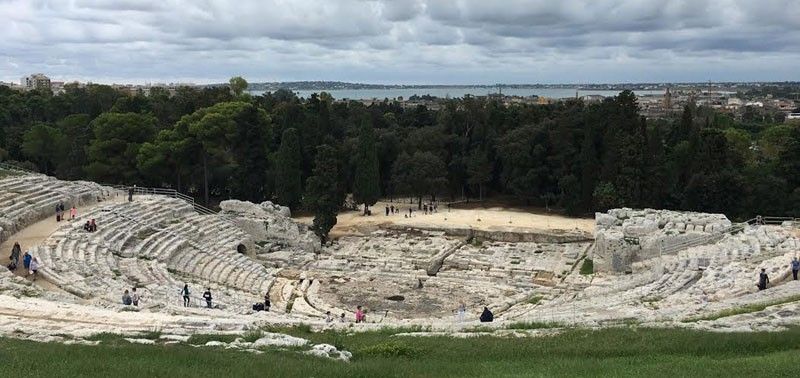
“You’re going to Sicily? How nice! Be careful of the Sicilian mafia.”
This was the most common remark I heard before I left for Sicily with a group of friends early last month. While the Godfather movie dates back to 1972 and was set in the 1940’s and 1950’s, it has unquestionably left a grim impression of the Sicilian crime scene on my generation.
We were unperturbed by this thought and excitedly prepared for our trip. After all, we were just going to be fun-loving tourists legally exploring the island. Two foreign friends who have been there told me it’s quite a safe and peaceful place.
I volunteered to do the 10-day itinerary because none of us has ever been to Sicily. After a week of internet research, I finally came up with a two-part itinerary. First five days on the eastern side of the island – Catania, Taormina, Siracusa, Piazza Armerina and Enna. On the last five days, we moved to the western side – Cefalu, Palermo, Erice and Monreale.
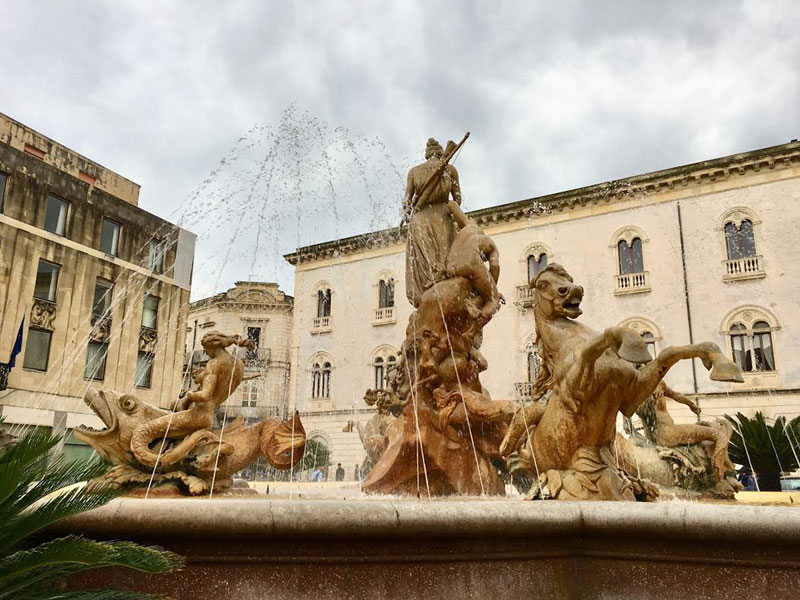
The Fontana di Diana in Piazza Archimede in Ortigia was built in 1907 by noted Italian sculptor Giulio Moschetti.
Sicily is a relatively small island, about twice the size of Samar in the Visayas. Going around was so convenient and the road and highway network is quite efficient. We pre-rented a chauffeured minibus that seats 17 so our group of nine had lots of leg room.
We stayed in a villa in Itala, a small hillside town south of Messina. It’s called Hamalia, an 8-bedroom villa at the center of a 10-hectare citrus grove overlooking the Strait of Messina. It became our home base during the first five days. Each of the bedrooms had a veranda that overlooks the sea, and the view, at 200 meters above sea level, is nothing short of spectacular! From our veranda we could see Itala Marina, the beach front community below, the Strait of Messina that separates Sicily from the mainland, and the Calabria coastline at the southern “toe” of Italy’s “boot.”
On our second day, we did a 30-minute drive to Taormina, a medieval town near the slope of Mt Etna. It is popular among tourists for its ancient Greek theater that is still being used for performances up to now; its tourist shops that line Corso Umberto, the main pedestrian thoroughfare; and its architecture that dates back to the 4th century when it was founded by the Greeks.
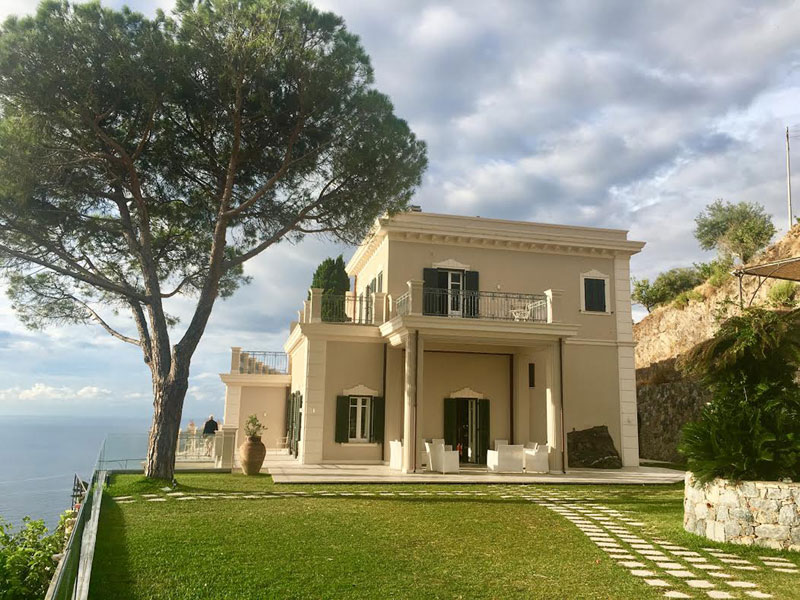
Hamalia, a restored 19th century villa situated on the slope of a mountain in Itala, was our home in Messina province.
As the largest island in the Mediterranean, Sicily was a crossroad to several ancient civilizations including the Greek, Phoenician, Carthaginian, Roman, Norman, Germanic, Byzantine, Arab and Spanish. The influences left by these civilizations made Sicily a most interesting cultural destination and are still evident in its architectural gems, unique cuisine, varied crafts and the way of life of Sicilians.
On our third day, we took a 2-hour drive to Syracuse or Siracusa as the locals call it. Undoubtedly it is the most beautiful of all the Sicilian cities we visited. During its heyday, Siracusa was the largest city in the ancient world, even bigger than Athens or Corinth.
Our first stop was the Parco Archeologico della Neapolis, one of Sicily’s greatest archeological sites. In the middle of the park is the spectacular Teatro Greco, hewn out of the rocky Temenite hill as a semi-circular classical Greek theater with a seating capacity of 16,000. It was built in the 5th century BC and was the venue for the staging of the last tragedies of Aeschylus performed in the author’s presence. Today the theater is still used for music, theater and dance performances from May to July.
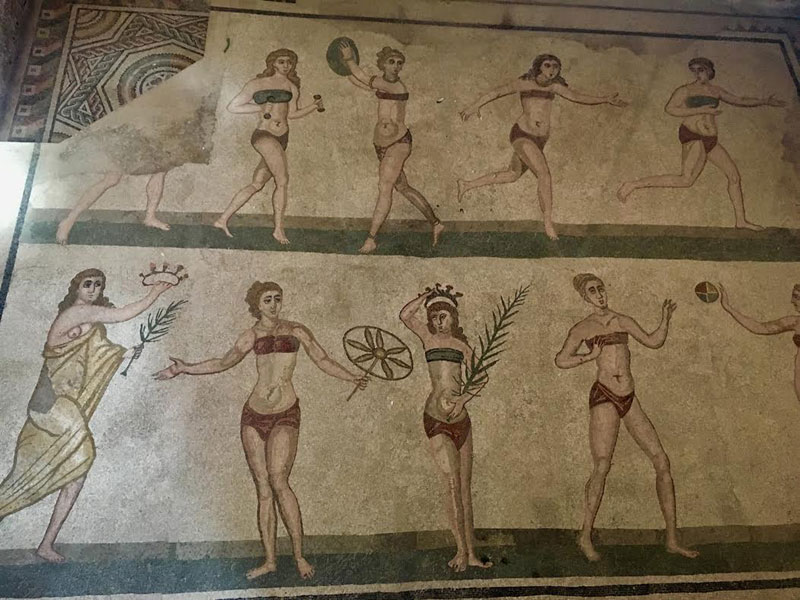
The famous 4th century “bikini girls” are part of the elaborate and intricate mosaic art of Villa Romana del Casale.
From Parco Archeologico, we proceeded to Ortigia, the heart of Siracusa settled in by Corinthians and Teneans in 734 BC. It is actually an island connected to the main city by bridges. We visited the Cathedral of Santa Maria delle Colonne, a towering structure in the Piazza Duomo. What is fascinating about its architecture is the combination of the ancient Greek temple of Athena (the original structure) and a medieval church which was built on top of the temple in 7th century AD.
Another major archaeological site, the Villa Romana del Casale, is situated in the outskirts of Piazza Armerina, a town located in the Sicilian hinterland. Tourists visit the town primarily for the villa which is home to some of the best preserved and most extensive examples of Roman mosaic art. Declared a UNESCO World Heritage Site, the villa contains floor mosaics depicting 4th century AD subject matters such as rural scenes, flora and fauna, classical motifs, Homeric escapades and mythological scenes. I can’t help marveling at how the North African artisans painstakingly crafted these mosaics that are still in exceptional condition like it was just installed yesterday.
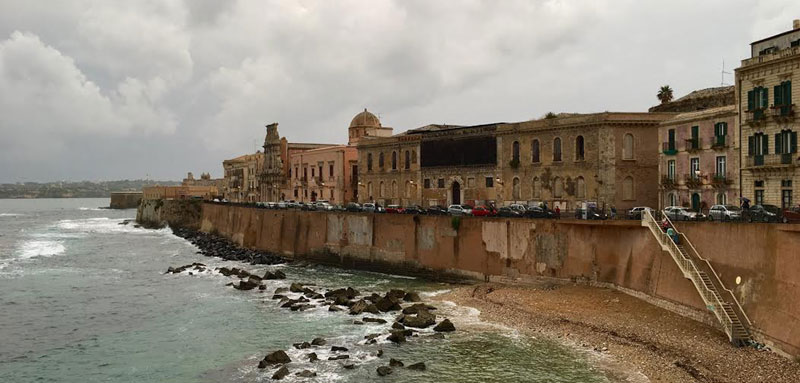
The island of Ortigia on the southern tip of Siracusa or Syracuse
Of course there were avid shoppers in our group, so it was imperative that we visit the outskirts of Enna in central Sicily for a whole day of shopping in the Sicilia Outlet Village. It is home to around 150 stores of Italian and international brands selling the latest items at 50 to 70 percent discount. We naturally went wild.
After five days, it was time to move to the other side of Sicily. Admittedly, it was not enough to cover everything we wanted to see and experience on the eastern side but we surely had a good sampling of intrinsic Sicilian culture. And, as expected, the Sicilian mafia was nowhere in sight the whole time.



















